Edward Burtynsky
Edward Burtynsky was born February 22, 1955 and is a Canadian photographer and artist known for his large format photographs of industrial landscapes. His works depict locations from around the world that represent the increasing development of industrialization and its impacts on nature and the human existence. It is most often connected to the philosophical concept of the sublime, a trait established by the grand scale of the work he creates, though they are equally disturbing in the way they reveal the context of rapid industrialization.
His work
He often positions himself at high-vantage points over the landscape using elevated platforms, the natural topography, and more currently drones, helicopters and fixed-wing aircraft.
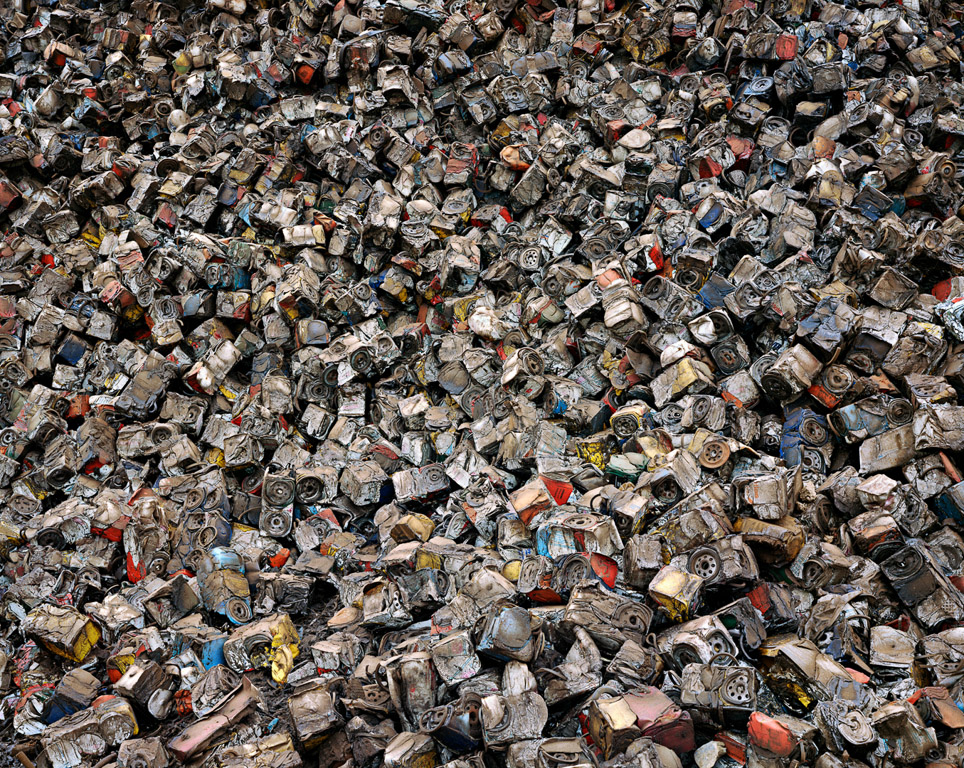
Edward Burtynsky took this image of litter to present the theme of Anthropocene and to show the negative effect humans are having on the earth.
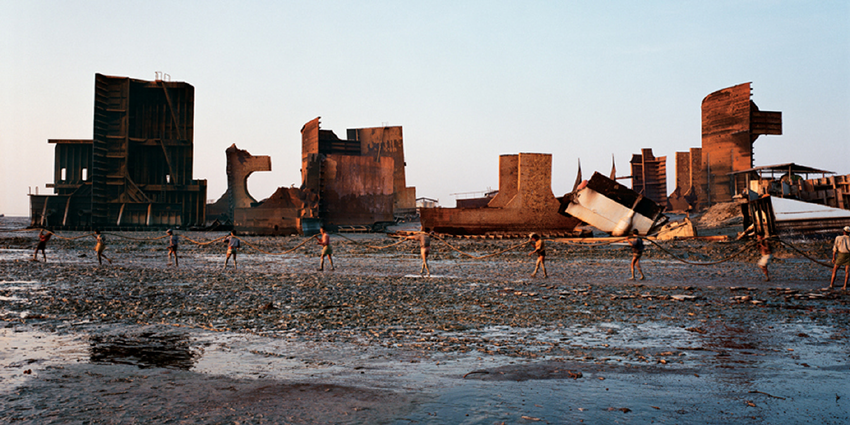
He took this picture of people building different buildings, to present industrialisation and the negative impact it is having on the earth. He also liked the sublime theme, and I think this image presents how industrialisation is negatively effecting the natural landscape and the sublime.

This photo of his shows industrialisation and over population, as it is of many houses in one area. These houses have taken up the natural environment.

This image also shows industrialisation and its negative impact on the earth.
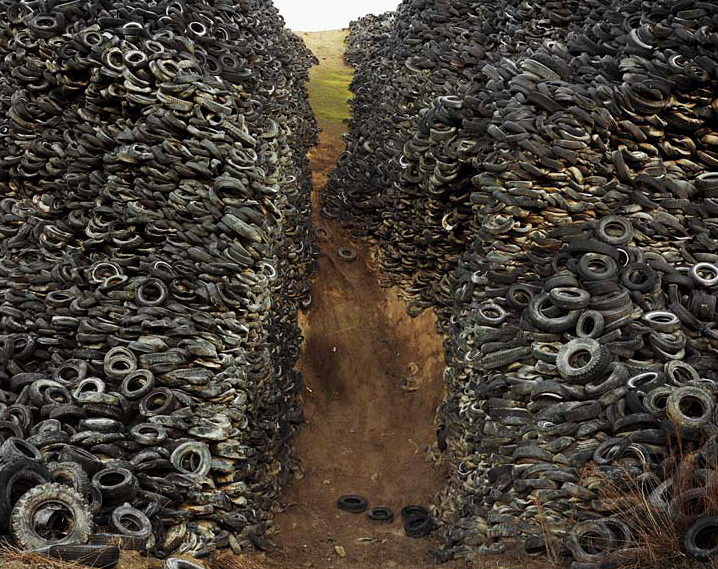
This image shows how much waste humans produce, and how there is no where to put all this waste except landfills, which mostly end up being dumped in the sea, which causes sea pollution and the lives of many animals.
How does this work relate to the theme of Anthropocene?
Edward Burkynsky work relates to the theme of Anthropocene, because his images present many different signs/ causes for Anthropocene, such as his photographs on;
- Litter
- Over population
- Industrialisation
These are themes of Anthropocene, because littering causes water pollution and the death of many sea and land animals. Over population also harms our earth, because there are not enough recourses on earth to support the whole population. Industrialisation also uses up lots of the earth recourses and ruins our earth’s natural environments.
What interests me about his work?
I am interested in his work, because I think he presents the theme of Anthropocene very well and presents many different causes and themes of Anthropocene. I am also interested in the way he takes his photographs from a high up birds eye angle and I would love to try and recreate this in my photoshoots.
Why have I chosen this artist?
I have chosen this artist, because he has taken photos of the different themes of Anthropocene, such as industrialisation, litter and over population, which are the themes that I am most interested in and have the best ideas for my photoshoots. I also feel very strongly about littering, as I live right next to Harve de Pas beach and a cemetery, and I always come across litter, while I am out walking my dogs. My mum also does things to help prevent littering, such as going through the cemetery with the dogs and picking up rubbish, and putting it in our bin.
I also think I would be able to try and recreate many of his photographs, such as his more simple industrial photographs and his photographs of litter. I also want to try and recreate the way he took his photographs, by trying to get higher up above what I’m taking pictures of. I want to do this especially when I look into the theme of over population.
What I am going to do in response to his work?
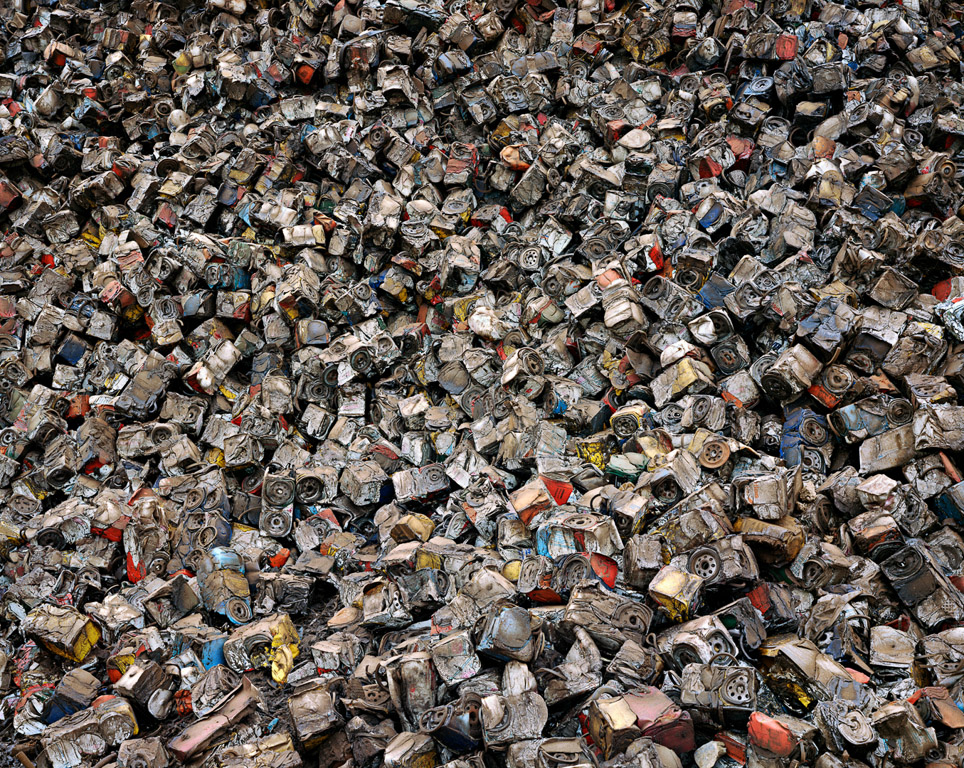
This is the main image I would like to try and recreate of his, because it shows a massive amount of litter just dumped in waste lands, because there is no where else to put it all. I also like how the litter takes up the full frame, so it is all that can be seen, because I think this makes the message in the image much more powerful. I also like how he has taken this in a birds eye view, because it is the best angle for this type of image. In response to this image and his work I am also going to try and obtain this birds eye view angle for my images.
In response to the main themes he has done, which is litter and industrialisation, I am going to focus on the same main themes.
Barry Rosenthal
Rosenthal was born in The Bronx in 1948 and is a New York based photographer, who shoots colour and black and white photographs. She collects discarded plastic objects and takes images of them collected together and laid out into a more eye pleasing way.
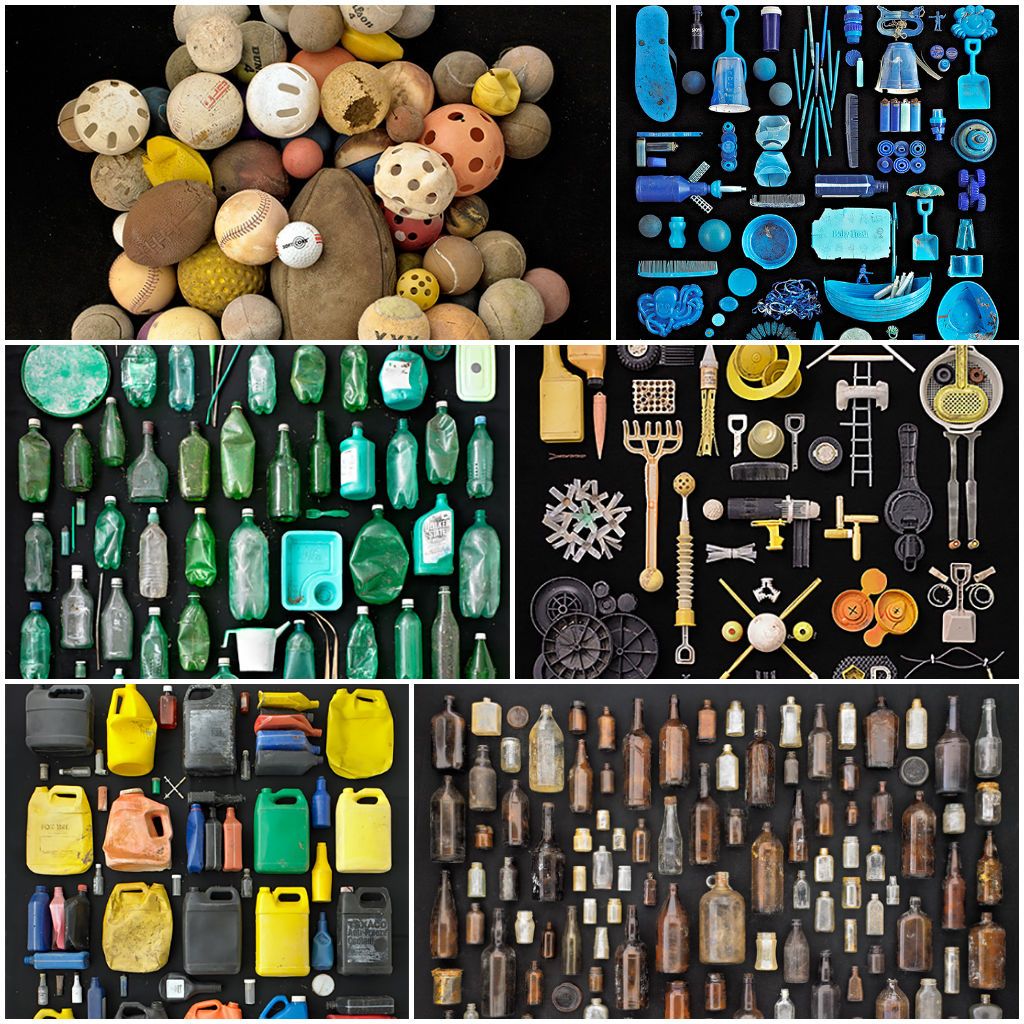
Her Work
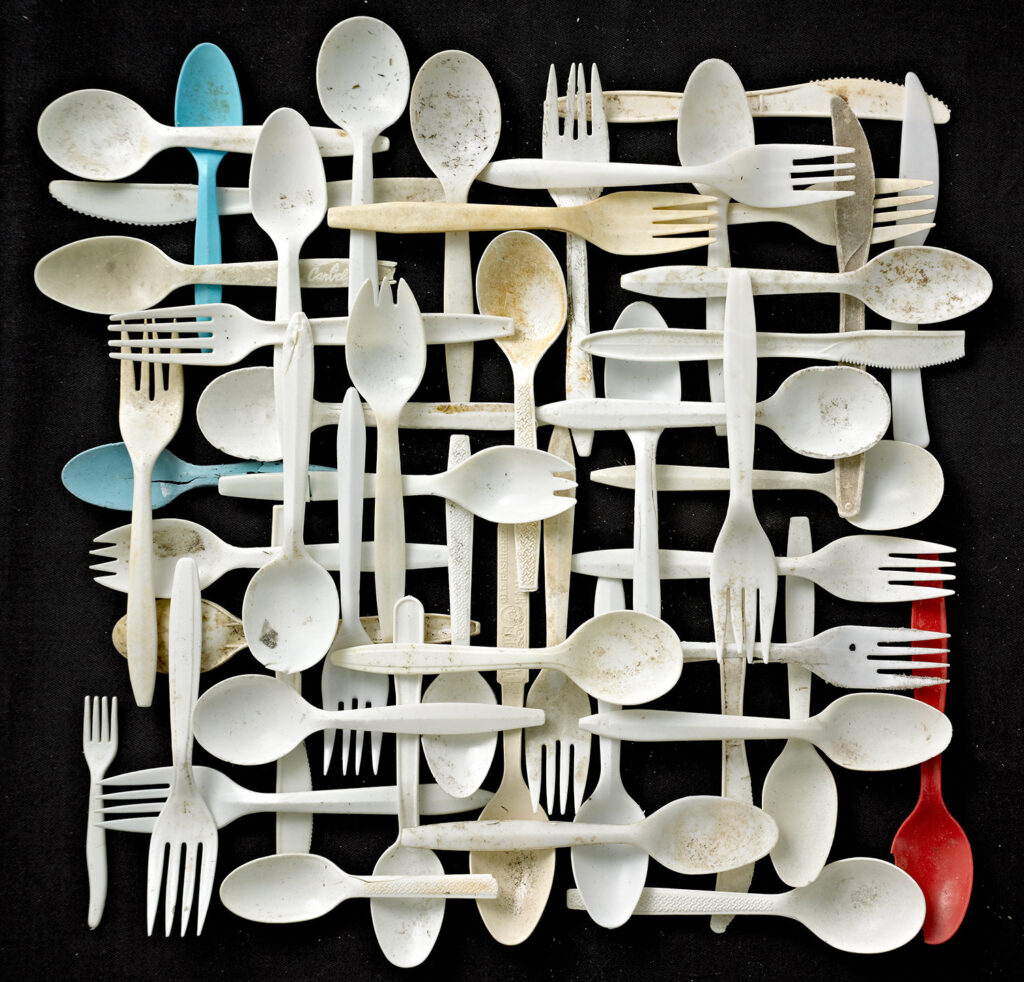
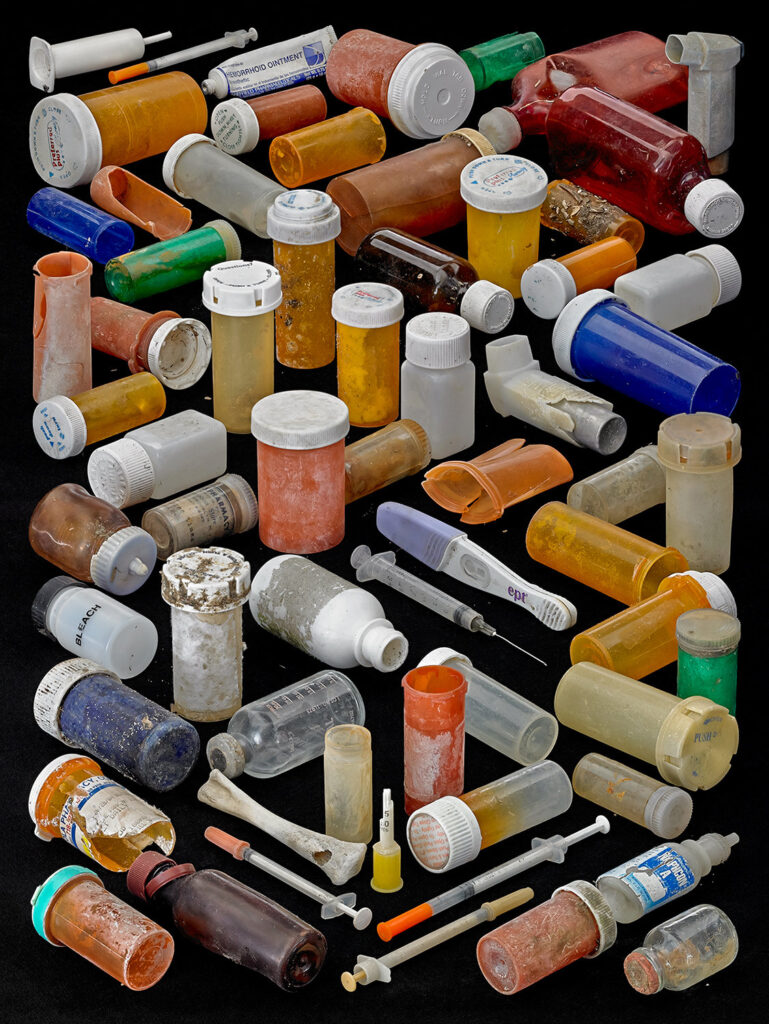

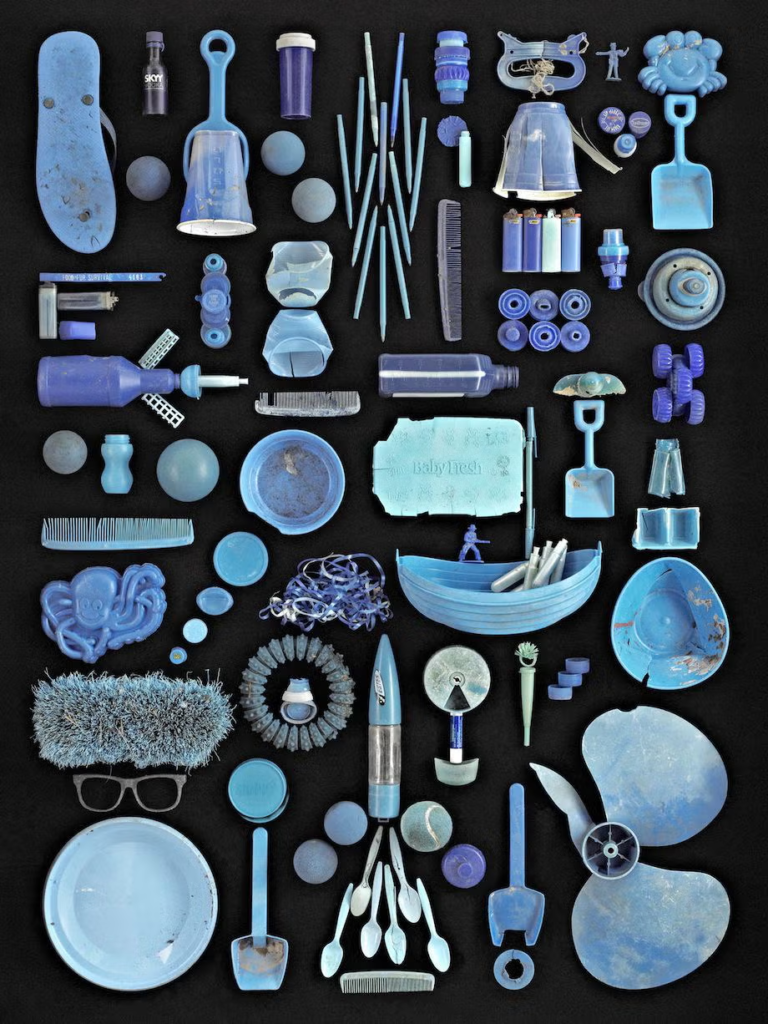
These photos of Barry Rosenthal’s display the amount of discarded plastic that is being dumped/ littered all over the world, because plastic is non-biodegradable and takes many many years to break down. This means there is not a quick and easy way to break down the plastic, so there is no where to keep the billions of pieces of plastic, so it just ends up in the ocean, or littered on the street etc. These images shows the masses of discarded plastic that she has found and shows how much of a large negative impact it is having on the earth. Not only is she displaying this negative impact plastic has, she is displaying it in an artistic beautiful way. She is colour coordinating the plastics and setting them up in different patterns, so these images will catch the viewers eye, before they even realise it is all discarded plastic. I think she has done this, so she can spread greater awareness to Anthropocene.
How does this work relate to the theme of Anthropocene?
Her work relates to the theme of Anthropocene, because it presents how many discarded materials there are, especially plastic, because it is not bio degradable, so it stays littered on the streets for years. This relates to the theme of Anthropocene, because this litter and plastics have a huge negative impact on the earth and the wild life, because they are eating this plastic, or getting choked by it, such as plastic beer can holders, which get wrapped around birds necks etc. Animals are eating this plastic, especially birds, because they do not have very good eye sight, so they think the plastic is fish/ plankton.
What interests me about her work?
Her work interests me, because she is spreading awareness in a beautiful artistic way and knows how to capture the viewers eye, before they even realise it is all pictures of discarded plastic. Another reason her work interests me, because it enlightens people, including myself, into how much plastic is actually littered and discarded.
I also love how she creates patterns and colour coordinates her work, to make it more artistic.
Why have I chosen this artist?
I have chosen this artist, because I feel like I could replicate some of her work very well, but in my own way, by creating different patterns and using different colours. I have also chosen this artist, because to be able to replicate her work and use her for inspiration, I will be helping the earth, because I have to go round and collect discarded plastics. This means that less animals will be getting killed by these plastics, even though I am only making a small difference.
What am I going to do in response to her work?
In response to her work, I am going to try and replicate her work using different discarded plastics I have found. However, I want to replicate her work in my own way, by using different colour schemes and creating different patterns.
I am going to go to the beach (Harve de pas) and the cemetery near my house to collect my discarded plastics, because there is always lots and lots of litter there. Many people also go along the beach and ‘clean up the beach,’ so I will ask to use their discarded plastics that they have collected also.
John Divola
John Divola (born 1949) is an American contemporary visual artist and educator, living in Riverside, California. He works in photography, describing himself as exploring the landscape by looking for the edge between the abstract and the specific. He is a professor in the art department at University of California Riverside. John Divola is most well known for his photographs of abandoned buildings.
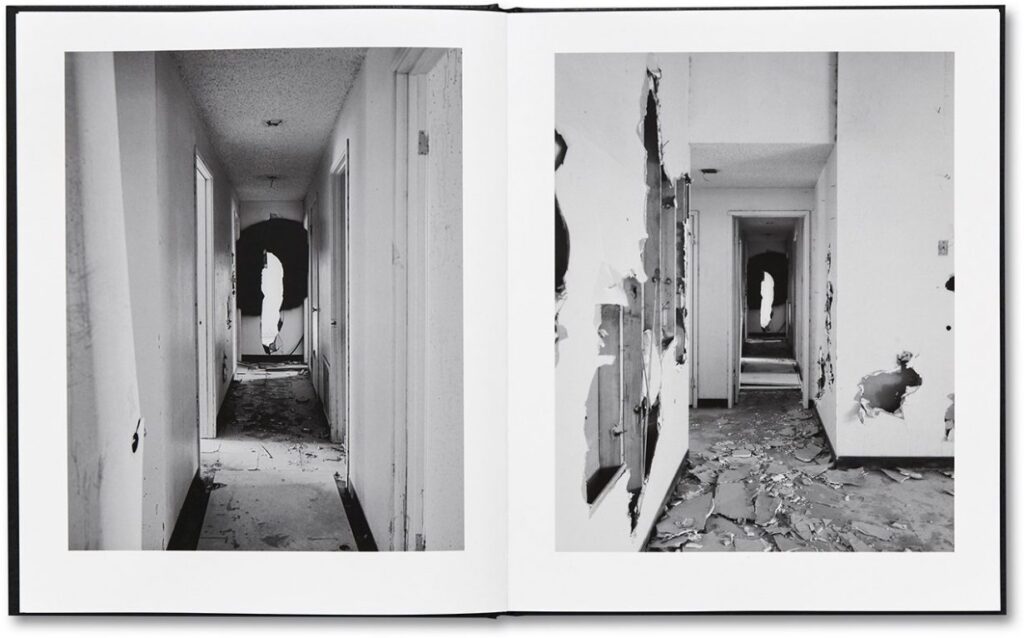
His work

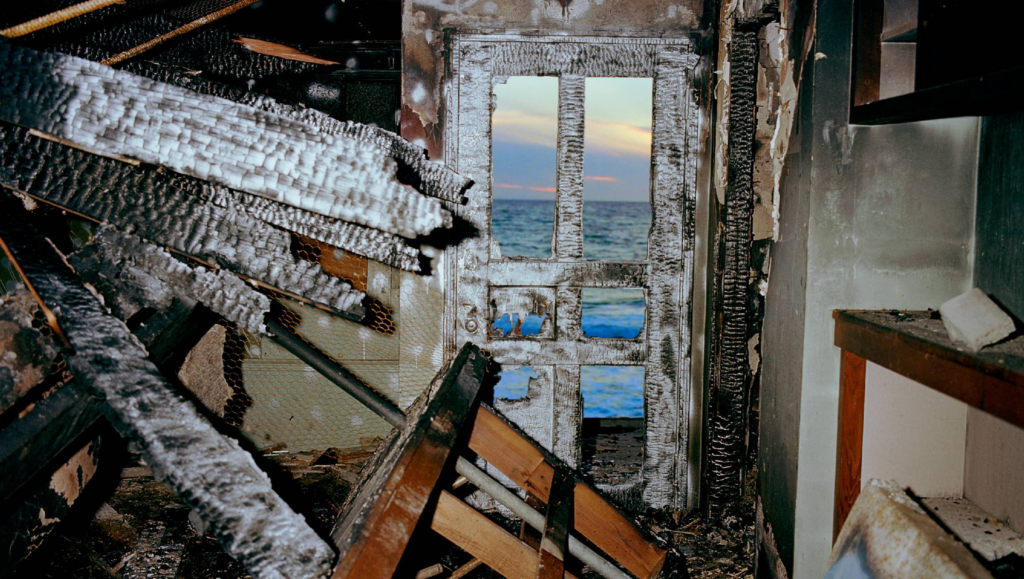
He usually takes photos of abandoned houses on beaches, to show how materials in and used to build the house have just been abandoned and left on the shore line, for animals to live near or inside, which may cause them harm, if they eat the materials, or if the different materials get washed away in the shore, which will cause more pollution.

However, he doesn’t always take images of abandoned houses on the beach, but he takes pictures of abandoned houses all over, because these abandoned materials effect wild life all over the world.
How does this work relate to the theme of Anthropocene?
His work relates to the theme of Anthropocene, because he presents large materials, such as items inside the abandoned houses, such as furniture, as well as the materials used to build the house, which are wearing down and abandoned. These materials are then abandoned and left for different animals to explore, which then may cause death to them if they eat, or get stuck in them. These materials also take years to decompose, so they are just left there for years and years.
What interests me about his work?
I am interested in his work, because he shows a different side to Anthropocene, that people don’t usually look at, but that is just as important as the many other aspects of Anthropocene. I am also interested in his work, because there are quite a few abandoned buildings in Jersey, that I could explore for this project.
Why have I chosen this artist?
I have chosen this artist, because I feel like I could recreate his work very well by exploring different abandoned buildings near me. I also think it would be very fun to explore these abandoned buildings. I also think he has done a good job at spreading an important message to do with Anthropocene, that all different sorts of abandoned materials, no matter how big or small will always effect the earth and wild life, even if it isn’t the most thought about cause for Anthropocene.
What I am going to do in response to his work?
In response to his work I am going to visit abandoned buildings all over Jersey, such as;
- Bouley bay cafe and hotel
- Building next to Mayfair
- St John state owned building
- St Martin state owned building
- St Saviour state owned building
I will then explore these places, while taking many different photographs of the rumble and ruins and materials that have been left behind.

I would also like to try and recreate this image, as well as a few others. I would recreate this image, by having Katie stand in front of a wall and using lights to try and cast a shadow, as I am unable to spray paint this figure on the walls, because its vandalism.
Comparing My Artists
Edward Burtynsky and Barry Rosenthal
Similarities:
- Both use a birds eye view angle when taking their photos
- Both take images of rubbish/ plastic
Differences:
- Burtynsky takes images out in the real world environment, whereas Rosenthal takes images in the studio
- Burtynsky also takes images of industrialisation, whereas Rosenthal only takes images of discarded plastic
- Rosenthal arranges her discarded plastics for her images, whereas Burtynsky finds places and takes photos of them the way they originally were
Edward Burtynsky and John Divola
Similarities:
- They both take photos of man-made sites/ industrialisation
- They both take photos in the real world environment
- They both take images of the places/ things where they found them in their original position
Differences:
- Burtynsky also takes photos of rubbish, whereas Divola only takes photos of industrilisation
John Divola and Barry Rosenthal
Differences:
- Rosenthal only takes images of discarded plastic, whereas Divola only takes images of industrialisation
